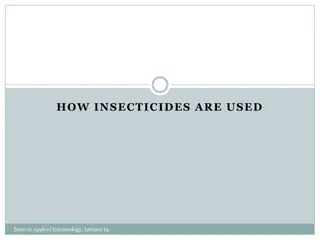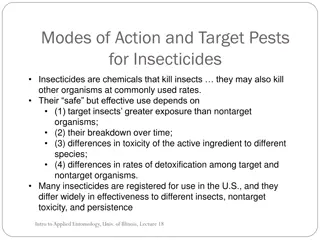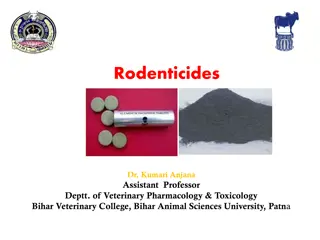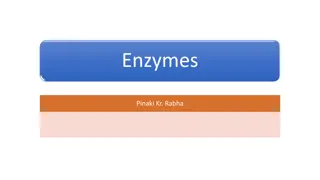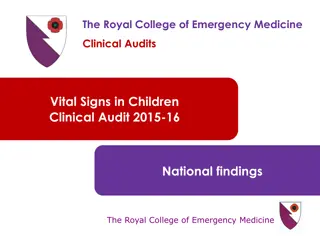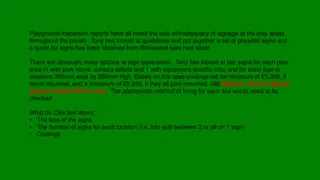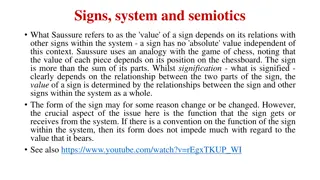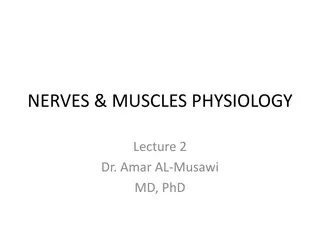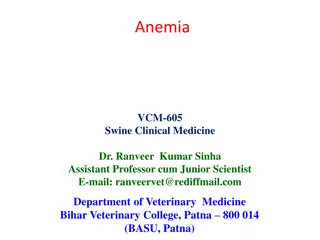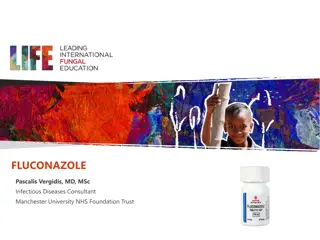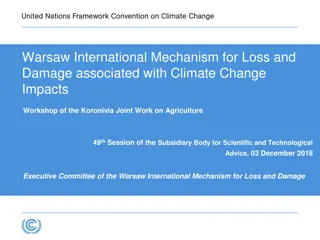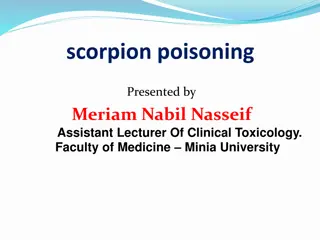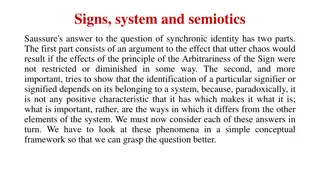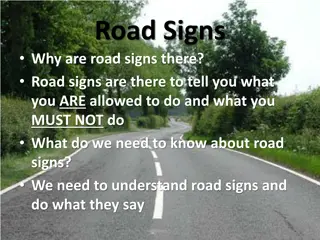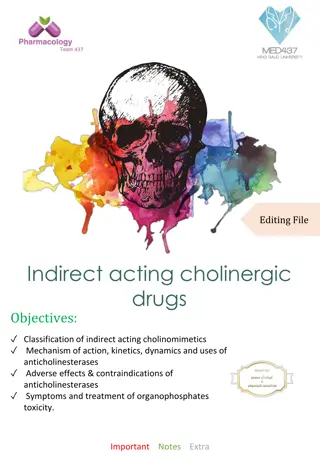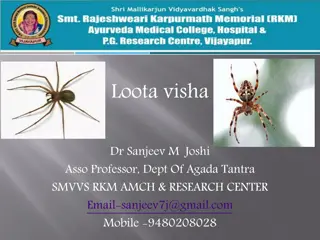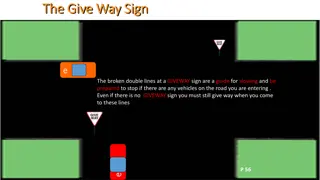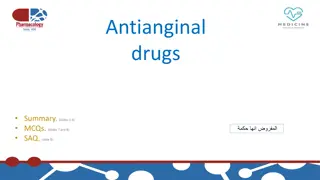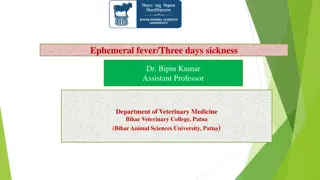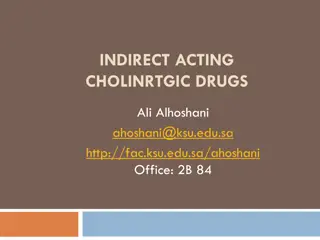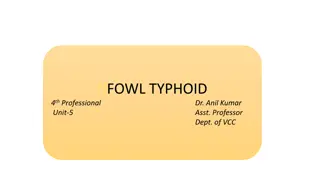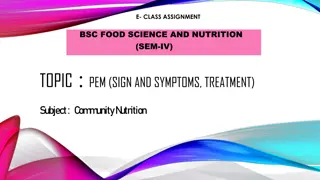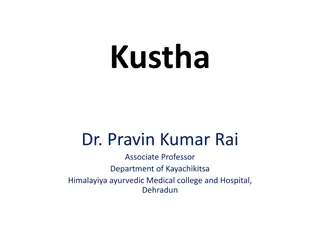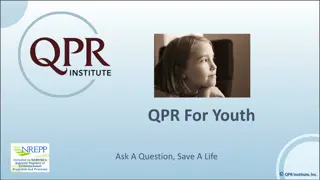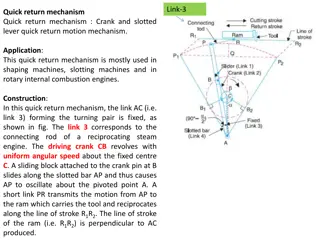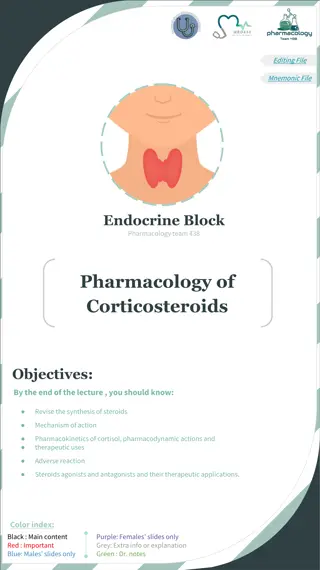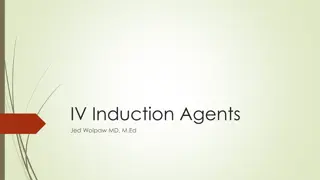Understanding Carbamate Insecticides: Classification, Mechanism of Action, Clinical Signs, and Treatment
Carbamate insecticides are widely used in agricultural and veterinary practices due to their broad-spectrum activity and low mammalian toxicity. This chapter discusses the classification, similarities with organophosphate compounds, differences, mechanism of action, clinical signs, diagnosis, and treatment of carbamate insecticide poisoning.
Download Presentation

Please find below an Image/Link to download the presentation.
The content on the website is provided AS IS for your information and personal use only. It may not be sold, licensed, or shared on other websites without obtaining consent from the author. Download presentation by click this link. If you encounter any issues during the download, it is possible that the publisher has removed the file from their server.
E N D
Presentation Transcript
Carbamate Insecticides Dr. Kumari Anjana Assistant Professor Deptt. of Veterinary Pharmacology & Toxicology Bihar Veterinary College, Bihar Animal Sciences University, Patna
Content of the chapter Introduction Classification Similarities with organophosphate compounds Differences from OP compounds Mechanism of action Clinical signs Diagnosis Treatment
Carbamate Insecticides Thecarbamate insecticides represent the third major group of synthetic organic insecticides developed after World War II. Carbamate Insecticides are widely used in agricultural, veterinary practices by virtue of their properties like; broad-spectrum of activity, low mammalian toxicity and rapid environmental inactivation. and household
Classification Naphthyl carbamates- Carbaryl (sevin). Phenylcarbamates Propoxur. Heterocyclic methylcarbamates- pyrolan and isolan. Heterocyclic dimethylcarbamates- Carbofuran and furadan. Oximes- aldicarb, methomyl and thiodicarb.
Similarities with organophosphate compounds Carbamate insecticides are similar to organophosphorus insecticides in most of their properties like: mode of action, range of toxicity, lack of environmental persistence and lack of safety for beneficial insects and non- target species. Similar to OP compounds, they do not have cumulative properties.
Differences from OP compounds Carbamates differ from OP compounds in following aspects: --They are reversible inhibitors of cholinesterase (ChE) enzyme. They inhibit cholinesterase at both anionic and esteratic sites. They are selective inhibitors of cholinesterase enzyme and do not inhibit carboxylesterase enzyme. Decarbamoylation (reactivation) of inhibited ChE enzyme is easier. Cholinesterase enzyme reactivators like 2-PAM are ineffective (contraindicated) intoxication. in the carbamate
Mechanism of action Carbamate inhibit acetylcholinesterase enzyme, but these insecticides occupy both anionic and esteratic sites of AChE. The inhibition in case of Carbamate results from a chemical reaction between the carbamoyl moiety of carbamate compound and the active site serine hydroxyl group of AChE to form carbamoylated enzyme rather than phosphorylated as with the organophosphate. The carbamoylated enzyme is relatively less stable and susceptible to hydrolysis, although rate of hydrolysis is not very fast as with acetylcholine.
Therefore, the decarbamoylation is easier in comparison to dephosporylation (OPs). Because carbamoylated AChE, the carbamate insecticides are often called reversible anticholinesterase agents. of relatively rapid reactivation of Toxicosis develops when the amount of carbamate pesticide in the body is so large that the rate of carbamoylation of AChE exceeds the rate of hydrolysis of pesticide by the enzyme.
Clinical signs Muscarinic signs: Profuse secretions and constriction, diarrhoea, frequent urination and miosis. salivation (watery drooling), bronchial Nicotinic signs: Muscular tremors, convulsions, paralysis of respiratory muscles and dyspnoea. CNS signs: Restlessness, ataxia, depression of respiratory and vasomotor centres, paralysis, coma and death due to respiration failure followed by cardiovascular failure.
Diagnosis: History, circumstantial evidence, Clinical signs, Estimation of blood ChE activity (25% or more decrease in OPI and carbamate toxicity) and Identification of the insecticide in feed, water, ruminal content or tissues. Treatment: Atropine sulphate only Not ChE-reactivators.
Members Carbaryl: used as ectoparasiticide in animals. Carbofuran: It is extensively used as a soil insecticide, where it has replaced cyclodienes for control of seed eating pests of grain crops.
Propoxur: It is used to control house-hold insects such as cockroaches, bedbugs and wasps. It is also used as a replacement of DDT for malaria control and is applied against a number of food, vegetable and ornamental pests. Methomyl: It is a broad-spectrum oxime carbamate which is highly effective against many plant feeding insects and also has high ovicidal activity.


